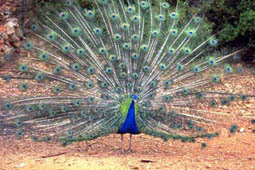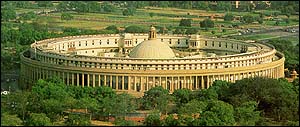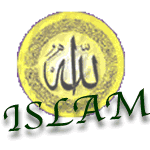
|

|

|

|

|

|

|
India's People
India now has over 1 billion people. Who are they? What is their history? There is no single answer to these questions. The people are almost as diverse in looks, ancestory, lifestyle, and beliefs as in their numbers. However, the people of India may be divided into a few large catagories to try to understand where they come from.
Ancestory
Religions

|
Note:
Much of Ancient Indian history is in dispute today, as it is nearly impossible to confirm events. One theory of ancestory is the story of the Indo-Aryan invaders. This is what is outlined below. However, other versions do exist, some of which claim the Indo-Aryan invaders existed, but did not have a long-lasting effect on the ancestory of Indians today. Others state that the Indo-Aryans were simply a myth. The issue is under constant investigation in an attempt to better understand who came to India so long ago. |
| The Indo-Aryans:
About 70% of Indians today are "Indo-Aryans". This means that their ancestors were Aryan invaders between 1500 and 200 BCE. These invaders came from central Europe and the Middle East. They spread through Northern India and settled in the Indus Valley. In time, they developed the Sanskrit language. Some intermarried with the people who they met in the Indus Valley, but many of the original inhabitants were forced South. Today, many Indians in the Northern and Central parts of the country are "Indo-Aryan". |
| Dravidians:
Another 25% of the population of India are Dravidians. Their ancestors were the original inhabitants of Southern India and those in the Indus Valley who did not intermarry the Indo-Aryan invaders. Many moved further south and separated their culture. In appearance, decendants of early Dravidians are slightly shorter and darker in skin color than those Indians in the north. |
| Adivasis:
India also has over 400 tribal groups, called Adivasis. These people make up about 8% of the total population, and have been in India for thousands of years. They live mostly in rural areas, sometimes in the east of India and central areas. Adivasi groups have a defined culture, system of justice, and value system. Unfortunately, they often go unrecognized and unprotected by the government. Their land and way of life is being destroyed, attempts are often made to assimilate them into the rest of India, and they suffer much discrimination. Several organizations, including a non-governmental organization called Bhasha, are now working to improve conditions for Adivasis. |

Hindus:
 80% of Indians are Hindus. Some of the most important texts of Hinduism, the Vedas, are
believed to have been written around 1500 BCE, although this is not certain. The Vedas outline the
basic philosophy of Hinduism and are expanded in texts called the Upanishads.
Hindus believe that there is a single, supreme power who is creator, preserver, and destroyer of
the universe. This power exists over all, without definate form, and is Supreme--God. 80% of Indians are Hindus. Some of the most important texts of Hinduism, the Vedas, are
believed to have been written around 1500 BCE, although this is not certain. The Vedas outline the
basic philosophy of Hinduism and are expanded in texts called the Upanishads.
Hindus believe that there is a single, supreme power who is creator, preserver, and destroyer of
the universe. This power exists over all, without definate form, and is Supreme--God.
However, many Hindus see God in all aspects of life and all things. To help them understand and feel connected to the Supreme Power, they describe its innumerable attributes and aspects using different names and images. These attributes make up the panthenon of images in Hinduism. Some of the most common names given to the Supreme Power are Brahma, Vishnu, Devi, and Saraswati. |
Muslims:
 About 14% of Indians are Muslims and practice Islam. This religion was popularized in
approximately 610 CE by Muhammad. The holy text of Islam is the Qu'ran and includes the teachings
of Muhammad. Like Hinduism, Islam recognizes only one God. But in Islam, there
is only one name for this Power--Allah. About 14% of Indians are Muslims and practice Islam. This religion was popularized in
approximately 610 CE by Muhammad. The holy text of Islam is the Qu'ran and includes the teachings
of Muhammad. Like Hinduism, Islam recognizes only one God. But in Islam, there
is only one name for this Power--Allah.
Observant Muslims pray facing Mecca five times a day. They also adhere to other guidelines in their lives including charity to neighbors, observance of certain fasts, dietary laws, and pilgrimage to Mecca and Medina. |
| Christians and Sikhs-- even more religions:
Christians also live in India and make up 2.5% of the population. Another 2% are Sikhs. Like Hindus, Sikhs believe in one God, but they do not accept the Hindu caste system. They have many things in common, however, such as a belief in rebirth and the power of God to shape human destiny. Many Sikhs live in the state of Punjab. They practice immense hospitality and tolerance of others. Some intermarry Hindus. |

IndiaTogether (at http://www.indiatogether.org) for information and a powerful introduction to Adavasi issues
Sylvia McNair, author of "India" in the Enchantment of the World series, for concise information on the Indo-Aryan/Dravidian question
